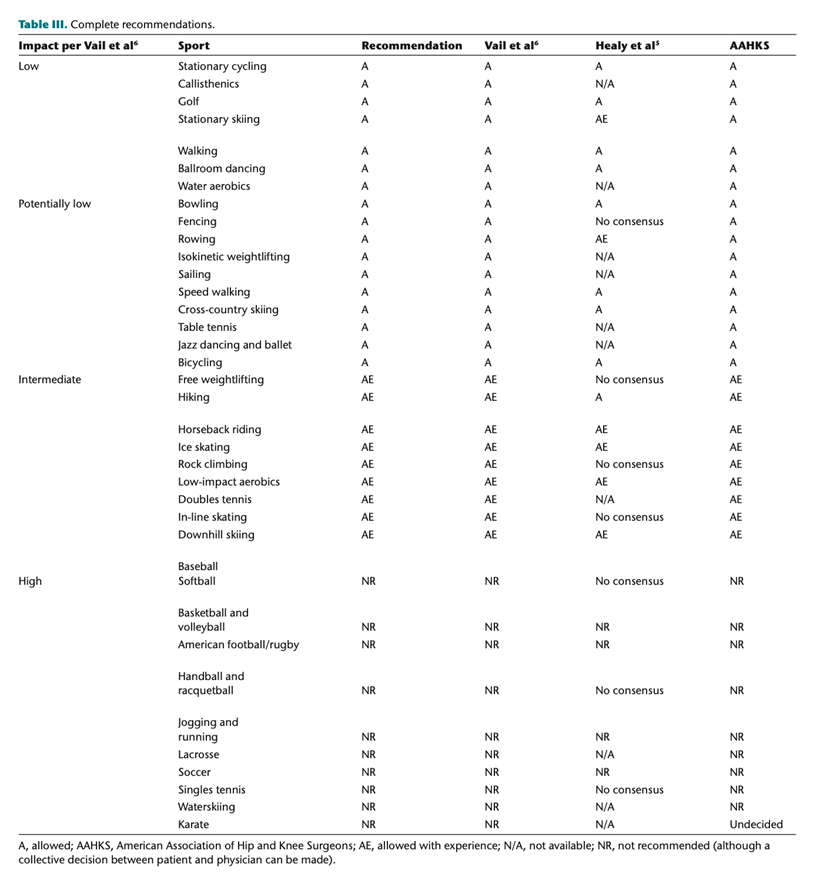Welcome to Orthosports Question for Physiotherapists, October 2023. This month Dr Doron Sher discusses return to sport after total knee replacement.
REMINDER: Register your place for the Annual Orthopaedic Updates. Saturday, 4th November 2023.
To register for the Live event at UNSW CLICK HERE
To register for the webinar (live & recorded) CLICK HERE
Please send your Questions to: education@orthosports.com.au

QUESTION | ARE PATIENTS ALLOWED TO RETURN TO SPORT AFTER A TOTAL KNEE REPLACEMENT
ANSWER | The short answer to this is yes, but with some guidelines in place.
Knee replacement improves not only pain and function of a joint but allows the patient to improve their cardiovascular health by exercising. Failure of the prosthetic joint is directly related to the number of cycles experienced by the joint and the force absorbed by the components during any given activity – Essentially the plastic liner eventually wears out.
Patients should expect to be active enough to exercise to stay healthy but probably should not participate in competitive athletic training or conditioning for competitive sports.
If a patient did not exercise before their joint replacement it is rare for them to take up exercise after the surgery. Those that do exercise usually participate in low impact exercise such as golf and bowls. Those with other medical co-morbidities are also unlikely to participate in sport. After knee replacement patients continue to demonstrate functional, strength and mobility deficits. Even one year after knee replacement surgery patients are weaker and take longer to climb stairs than people without knee pathology. These differences are quite significant and are even larger for men than for women. Knee replacement does improve self-reported functional ability and reduces pain but it does not eliminate all impairments.
The shape of the prosthesis also limits the amount that the knee can bend so even patients who bend well after their surgery will have difficulty squatting and kneeling.
Since the prosthesis does not have a nerve supply proprioceptive function in the knee is not as good after surgery as it was before surgery.
This means that activities such as side stepping can lead to excessive translation of the components which could lead to ligament injury or damage to the polyethylene (plastic liner). While there is no real danger with doing squats and lunges there are usually other ways which are just as effective at strengthening the muscles of the leg.
Knee joint replacement can fail for several mechanical reasons:
- The implant (metal or polyethylene) can fail or break
- The implant can loosen from the bone
- The polyethylene liner can wear out and need to be replaced
- The ligaments around the knee can fail.
Unfortunately no study has adequately looked at implant failure versus activity level.
Different activities cause different loads on the various components in these prostheses. Some experience higher loads in flexion and some in extension. There are also cruciate retaining and cruciate sacrificing components which have different biomechanical characteristics.
In general low contact, low impact athletic activities are safe. These include: sailing, swimming, scuba diving, cycling, golf, bowling and doubles tennis.
Having a prosthetic joint in the knee interferes with proprioceptive function and therefore co-ordination.
High contact, high impact athletic activity are discouraged in order to prolong the life of the implant. These include: running, water skiing, football, basketball, hockey, handball, karate, soccer, squash, singles tennis and racketball, just to name a few. If the patient wishes to continue an activity such as power walking then they should alternate this activity with swimming or cycling. For bush walking, patients are advised to avoid descents or at least use walking poles.
The table below lists the recommended as Allowed, Allowed with Experience or Not Recommended. This is a consensus document and as with most publications on the topic is not based on hard science but gut feel from the surgeon.
Summary
While I encourage my patients to be active after their joint replacement I caution them against activities which could cause failure of the components.

Systematic Review Bone Jt Open 2022;3-3:245–251. doi: 10.1302/2633-1462.33.BJO- 2021-0187.R2

